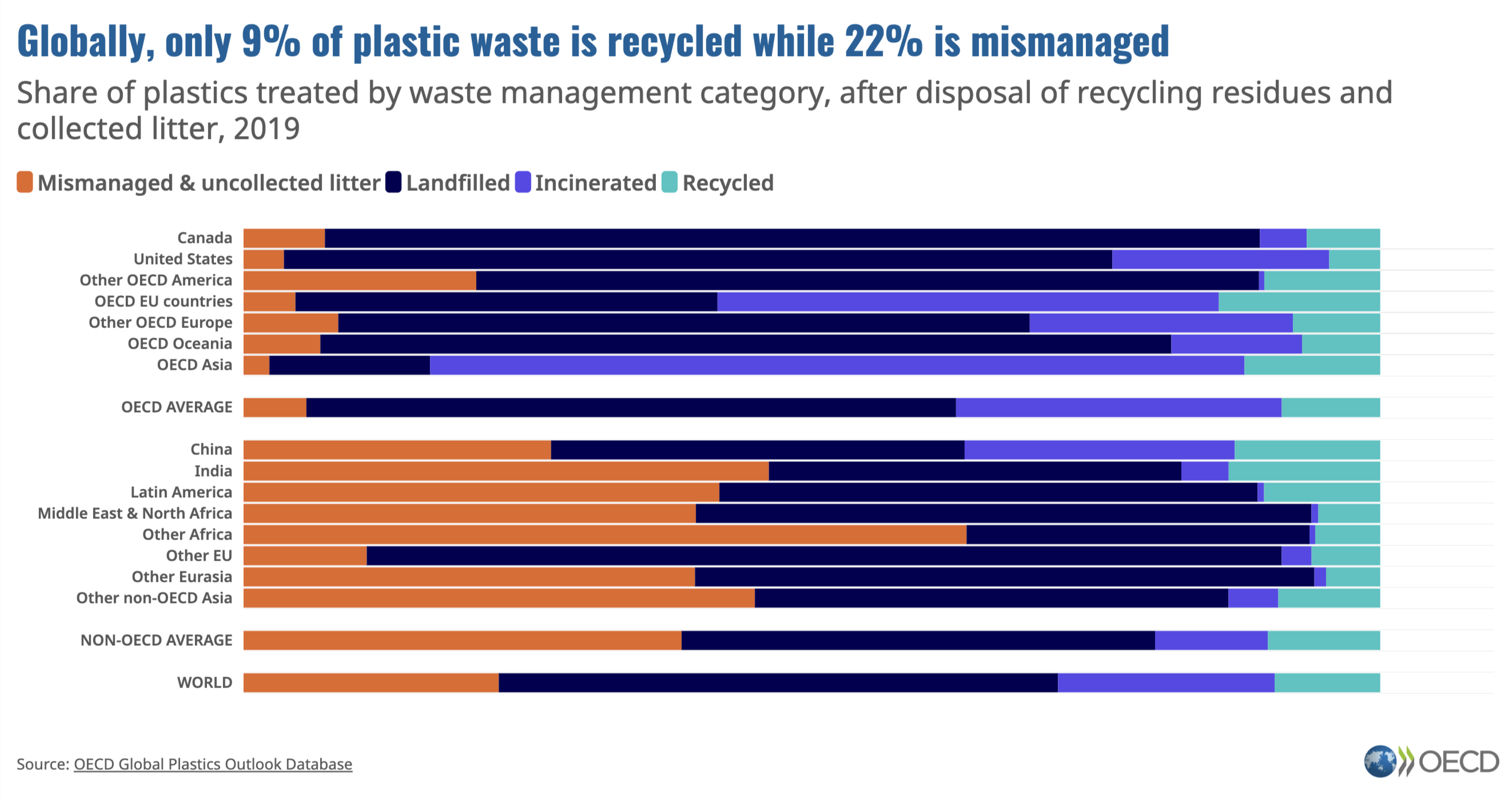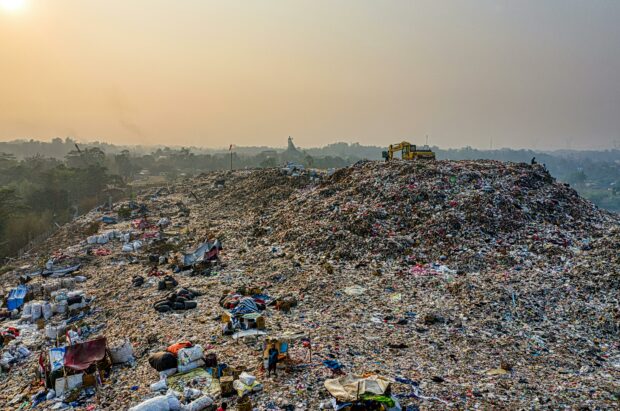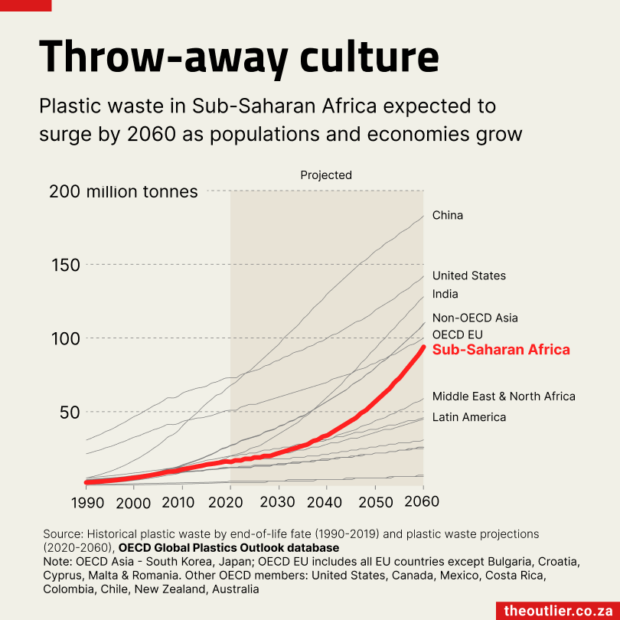How SA policies can do more to curb plastic waste
We’re creating more plastic than ever before and it’s worsening air, land and water pollution. The world threw away more than twice as much plastic in 2019 as in 2000, with less than 10% now being recycled while 19% is incinerated and about half goes to landfill, according to the Organisation for Economic Co-operation and Development (OECD). The rest goes into uncontrolled dumpsites, gets burned in open pits or is leaked into the environment.

Countries in Sub-Saharan Africa are now the largest contributors to global plastic waste. Nigeria, Egypt and South Africa lead the way with the most mismanaged litter on the continent. On average, a person in SA uses about 28 kilograms (kg) of plastic waste per year – much higher than the continental average of 16 kg per year. This adds up to over 1,500 kilotonnes (kt) (or 10 blue whales) of plastic waste every year in SA, and only around 20% gets recycled.
But there are policies designed to curb our plastic problem. In 2020 the South African Plastics Pact was formed as a 48-member body to promote responsible production and reduce waste. Extended Producer Responsibility (EPR) regulations also came into effect in 2023 to make manufacturers take responsibility for where their plastics end up. To get a sense of why policies like this are so important, let’s examine how plastic harms the environment.
How plastic causes air, land and water pollution
There are efforts to curb bad plastics at their source, but research from the Council for Scientific and Industrial Research (CSIR) indicates that these “have had limited impact” on a nationwide scale. Without understating the importance of regulating manufacturers, SA’s plastic problems are also deeply connected with how waste is managed. Almost 1 in 3 households live with uncollected waste. When it is picked up, municipal landfills are either filling up or struggling with financial or operational challenges and a lack of staff to recycle effectively.
A CSIR modelling study on solutions reveals that waste mismanagement causes almost 490 kt of plastic to pollute the air, land and water every year. When waste isn’t collected, residents can resort to illegal dumping, meaning around 145 kt of plastic ends up polluting the land. Some communities have to resort to burning their waste, meaning a further 275 kt of plastic pollutes the air. Uncollected waste also eventually trickles into rivers and water sources, and 70 kt of this is plastic.
Very little waste is sorted and separated when it gets to landfill. Informal waste collectors that are seen in cities sort and collect almost four-fifths of the 301 kt of plastic litter that gets recycled in a year. Researchers say these informal workers could help increase the current less than 20% recycling rate by improving collection and sorting systems.
A lead researcher with CSIR, Suzan Oelofse, has said that “a reduction in demand for plastics, increased circularity through collection and recycling, and proper end-of-life management, could result in an almost two-thirds reduction in plastic pollution by 2040.”

What does the future of SA’s plastic litter look like?
The CSIR’s research maps out three ways that SA’s plastic problem could pan out over the next 16 years. The first considers a future where current policies (excluding EPR rules) and plastic production levels don’t change (i.e the “business as usual scenario”). The second looks at how EPR rules could change the trend. And the third maps out a future where more plastic is collected, less of it is made, and landfills are better managed.
Along with reducing litter, this third “optimal scenario” sees a future where 37% of projected greenhouse gas (GHG) emissions from plastics are avoided. To achieve this, policies will need to reduce plastic demand by more than 2% per year, while close to 5% more plastic will need to be collected annually alongside a 5% increase in recycling.
If things go unchanged, plastic pollution could almost double – from 491 kt in 2020 to 865 kt in 2040. This will also impact GHG emissions from plastics. The study indicates that if certain factors stay the same, like the type and amount of CO2-intensive plastic SA currently produces and our means of making electricity, plastics-related GHG emissions could increase drastically by 2040.
The government’s new EPR rules require several sectors to figure out where their plastics end up. The regulations also set up annual targets to increase plastic collection and recycling over five years. Achieving these targets could reduce plastic pollution by 33% compared to the CSIR’s business as usual scenario. However, without using less plastic, pollution levels are expected to remain the same in 2040. The study also argues that the regulations could be more effective if targets are reviewed and extended beyond the current five-year period.
Systemic change to curb plastic pollution
Evidence-based reports like this from the CSIR show that reducing plastic litter in SA is going to require systemic changes. Regulations on plastic producers, increased waste collection, and improved management systems all need to be taken into account if SA is going to stop its 10 whales worth of plastic from polluting the environment every year.
Related Articles
Tackling climate change and health together: South Africa’s new scorecard
South Africa’s heavy coal dependence is driving a climate and health crisis — tackling both together will reap huge benefits for people and the economy.
July will be the hottest month in recorded history
“The era of global boiling has arrived”, said UN chief António Guterres, and leaders must take drastic and immediate action to limit climate catastrophe.





